Field Trip 002: Work/Life Imbalance
Kalei and Sweeterfat bring the iconic TBWA Chiat/Day office designed by Gaetano Pesce back to life in a new exhibition
I’ll never forget what it felt like to see photos of the TBWA Chiat/Day headquarters in New York City for the first time. When Jay Chiat commissioned the late Gaetano Pesce to design an office for his advertising agency in 1994, he wanted to revolutionize the conventional workplace. The result was an ambitious “virtual” office that pushed the boundaries of office culture as it was previously known—there would be no private cubicles or desks, but a paperless playground with open common areas to foster a sense of creative collaboration within the 29,000-square-foot structure.
At the time, architectural critic Herbert Muschamp described the atmosphere as a “radically fluid arrangement of space” in an article published in the New York Times, suggesting that “where a conventional design seeks to satisfy the desire for beauty, Pesce uncovers something closer to the beauty of desire.” Of course, not everyone shared this dreamy vision of the Chiat/Day office. In 1999, WIRED reported that it was more or less a nightmare for the employees that were forced to work there—the polarizing office was allegedly referred to as “the laughingstock of the industry.”
In a 2016 episode of NPR’s Planet Money, Shalom Auslander compared working in the Chiat/Day office to “sitting inside of a migraine.” Haj Ando likened it to a “Pee Wee’s Playhouse themed insane asylum,” describing the space as “a colorful, chaotic shrooms induced dream” where there was never a dull moment while he was on the clock. Despite some of the opposition, Pesce supposedly wasn’t bothered—in fact, he expected tension in reaction to the presentation of new ideas from people that struggled to understand all the creative possibilities. In the end, the Chiat/Day office walked so the different iterations of the open office that followed could run wild with abandon. As Planet Money co-host Nick Fountain noted, it played out more like an experiment to figure out what would happen if people were freed from their cages cubicles.
“What potential can be realized when you let people run free?”
Kalei and Sweeterfat recently collaborated on an exhibition that reimagines the radical office within a 1,700-square-foot gallery space on the Lower East Side. WORK/LIFE IMBALANCE celebrates the duality of design and material exploration. The show is curated by Noah O’Leary, founder of Sweeterfat, who tapped into his trusted network of “Pesce friends” to find the featured pieces you’ll see decorated with Macintosh tech and other ephemera from the ‘90s—he sourced chairs, sofas, tables, locker doors, bar cabinets, credenza prototypes, mail cabinets, resin outlet covers, and other objects that were salvaged from the original office when it was being dismantled. “I hope that there are still pockets or portals in the world where these things still exist and they’e in protected hands,” O’Leary says. “The important part is that it’s just appreciated.”
His personal passion for Pesce began to take shape after encountering his work in 2020. When he learned the lore of the TBWA Chiat/Day office, O’Leary was taken aback by the unexpectedness of an artist like Pesce choosing a corporate environment for his most experimental designs to live. It wasn’t just the prospect of telling this particular story for the first time in an art show that intrigued him, but the rare opportunity to provide access to a space where people could interact with these lost gems from Pesce’s incredible body of work. “I want it to be as as honest, as true, and as special of a story as it can be,” O’Leary says about the exhibition. “[Pesce] really understood what it was he was trying to do beyond create a space to work—he was creating an idea of a space to work that we could rely on for decades to come.”
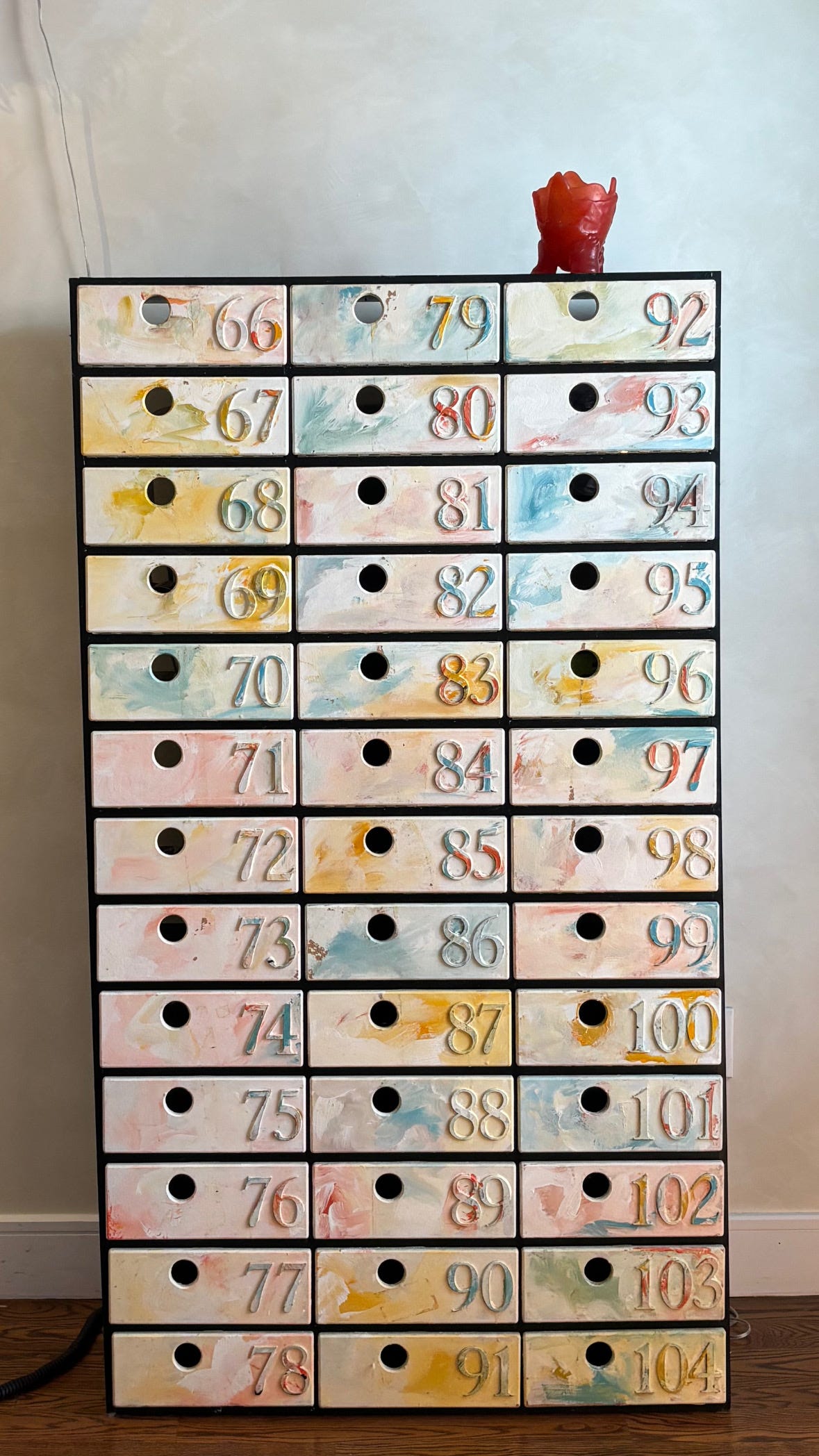
According to O’Leary, the I Am With You coffee table best captures Pesce’s design ethos. “They just smiled back at you and said, ‘I am with you,’ to me that does not exist in a corporate setting and that is the metaphor of what I think he was trying to do in this space,” he explains. “Now, we live in a world where people are urging for these community spaces for working together, and also for design that sparks joy and speaks to each individual person differently.” Every piece differs because it reflects the full spectrum of the human condition—O’Leary believes they’re all imbued with spirits, citing the Pratt chair as another example. “Each one is reaching out its hand silently and asking us if we want to take it,” he continues. “We have to answer that questions for ourselves and I love that answer.” (Pesce once said that the chair fell out of the mold “like a body with no bones,” which O’Leary thinks is a beautiful sentiment.)
Even outside of the office, O’Leary has noticed how playfulness is often restricted to specific targeted areas within the walls of traditional interiors. “I don’t fully agree with that,” he argues. “For certain clients, it doesn’t make sense for their style or what they want their interior to feel like, but in other settings we can break the mold more by listening to Pesce. He put a lot of messages and lessons out there for us, and it’s like we’re almost still a little bit scared of it.” (Speaking of messages, Pesce literally wrote correspondences like “nice view” on the floor under the windows overlooking the New York Harbor and East River.)
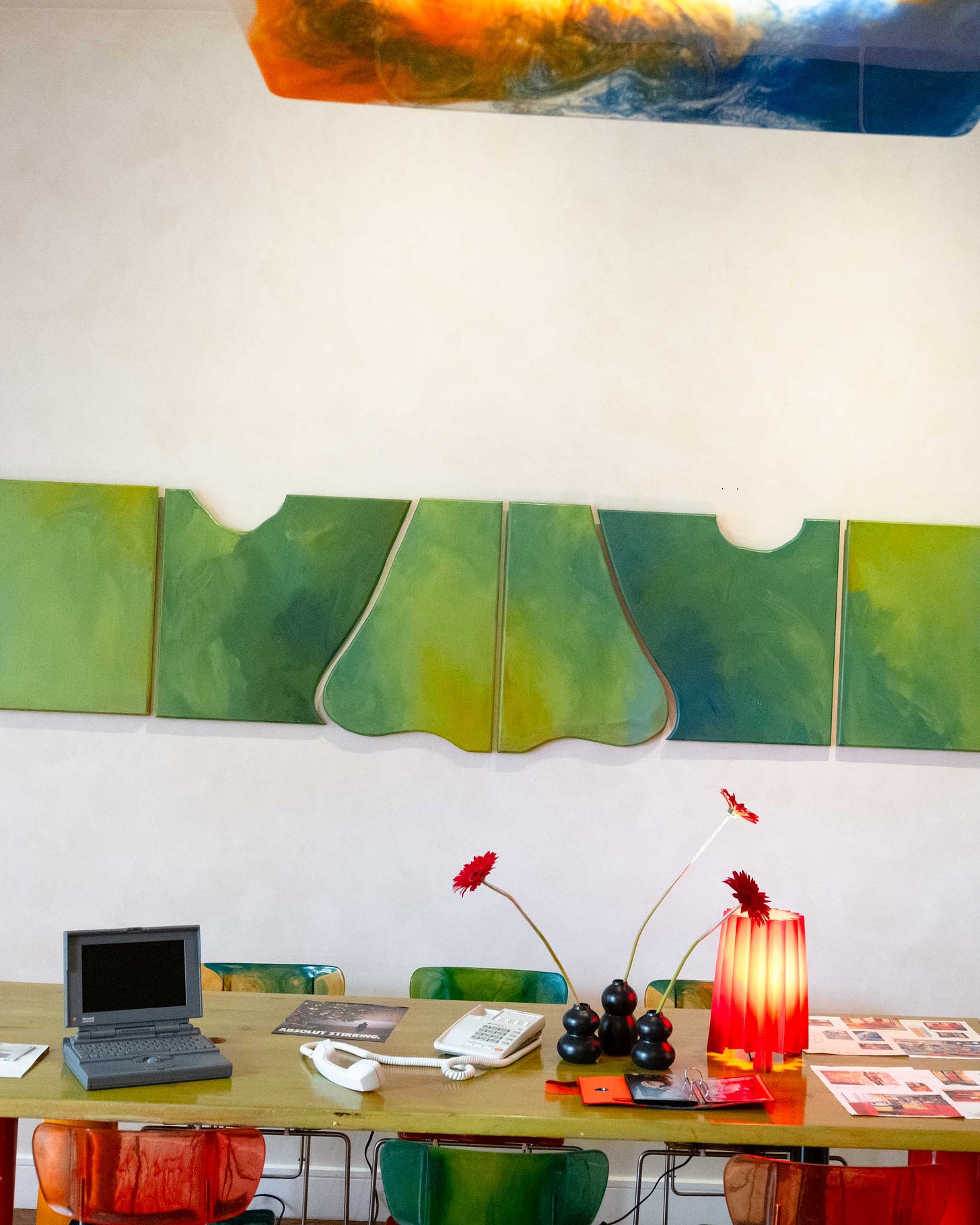
Back in 1994, Muschamp made the following declaration: “Before long, many people will telecommute from home along the information highway. Will it even make sense to keep an office?” When offices rapidly shut down during the pandemic, echoes that the end of the workplace was near were heard loudly on every social media channel. While ____ summer slips away at our fingertips, the return to office mandates are coming in hot and everyone with skin in the game is feeling bothered. Corporations are scrambling to get more stations on colorless floors for their subordinates to perform labor, refusing to even consider remote work as an option despite its proven success rate because keeping up those booked and busy appearances is more important than providing people with what they actually need in order to maintain productivity.
As someone who has worked out of offices for their entire career (including the three years spent interning for “college credit”), I constantly find myself straddling a seesaw in regards to corporate culture—I work better in solitude where I can’t be disturbed, but I enjoy the comradery of brainstorming with people in person. (The lunch breaks used for venting sessions with trauma-bonded colleagues always make the day go by faster.) As a creative, my process doesn’t bend at the will of the outdated 9-to-5 structure, and I don’t believe in “work-life balance” as a concept because I value having a life outside of work and an identity that doesn’t revolve around the work that I do. In most cases, I would rather have an office of my own, but perhaps I would feel differently if I ever worked out of a space that doubled as a source of inspiration.
When I had the opportunity to visit Pesce’s studio at Brooklyn Navy Yard for a private tour on a warm June afternoon in 2023, it felt like walking inside the crevices of his beautifully weird mind. I still think about the Bottega Venata show for Milan Fashion Week where models became works of art as they glided down his signature resin-coated floor while celebrities spectated from the edge of their Come Stai? seats. If I could translate even a drop of this creative energy into a space, I think I’d be pretty content with my life.
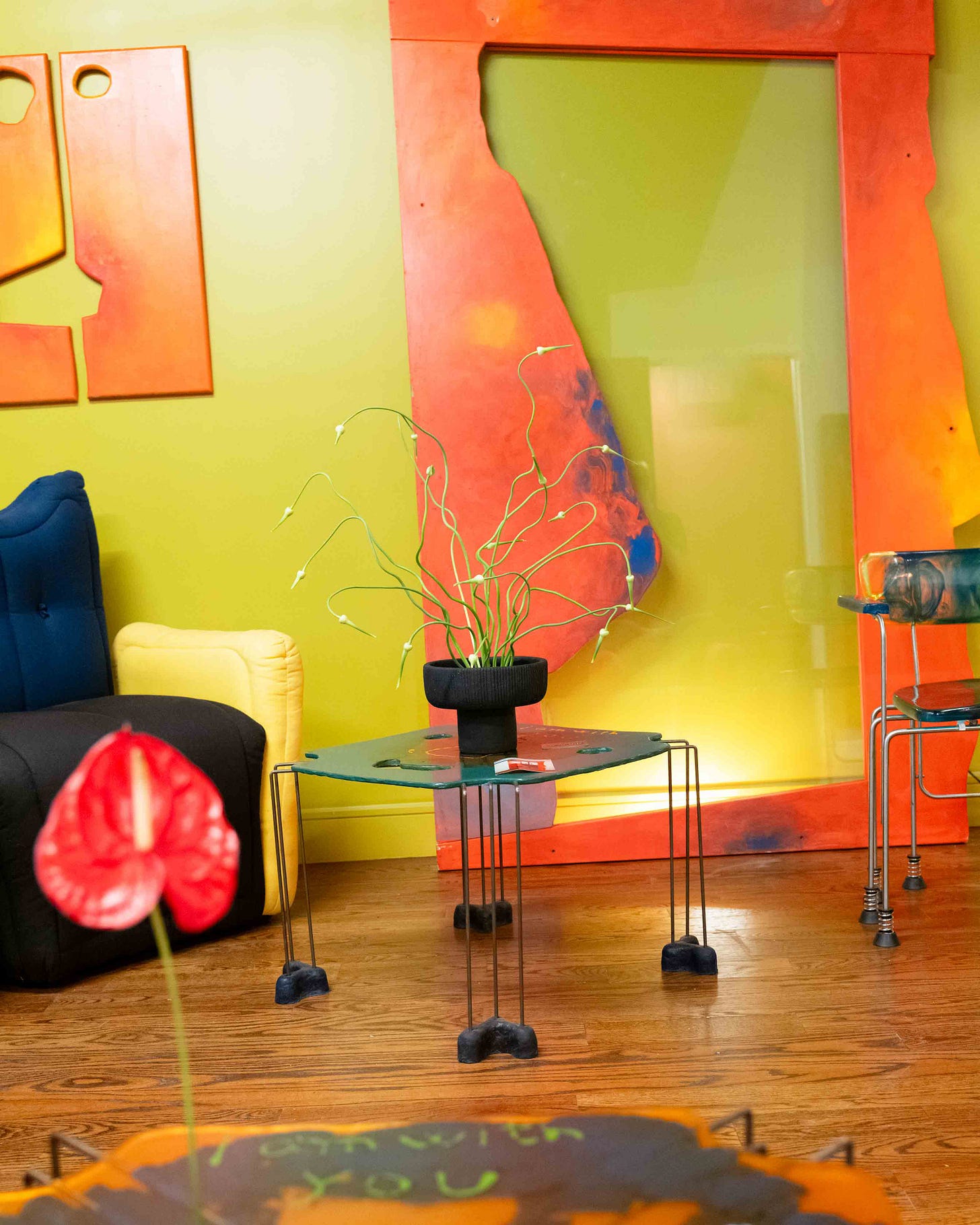
With every step that we take forward in this post-pandemic world, we seem to be losing our collective appetite for risk. A job is a job, but why are businesses scared to think outside the box when it comes to designing modern workspaces? Show me an office with a point of view! You don’t have to build a corporate campus that runs on sponsored adrenaline, but what if we stopped making the office feel like a soulless void where dreams go to die? As we ascend to the next level of the the girlhood-to-girlboss pipeline, I can only hope that more companies will take cues from Pesce instead of copy pasting the corporate fetish moodboards being circulated on Pinterest. Is the resin resonating with you?
“It’s a capitalist endeavor because they just want to juice out as much labor and productivity as they possibly can while repackaging it as play,” O’Leary concludes. “Pesce was like ‘No, we want to actually embed play in this space because it’s never been done before, and it’s going to surprise and it’s going to contrast…’ He was doing it for art and conceptual purposes as a maker, as a designer, and as an architect. But the other people, they’re just trying to make money like ‘Well, if we have arcades then they’ll stay in the office, they’ll work more, and they’ll never leave.’”
WORK/LIFE IMBALANCE is on view at Kalei on 159 Bowery until August 3.





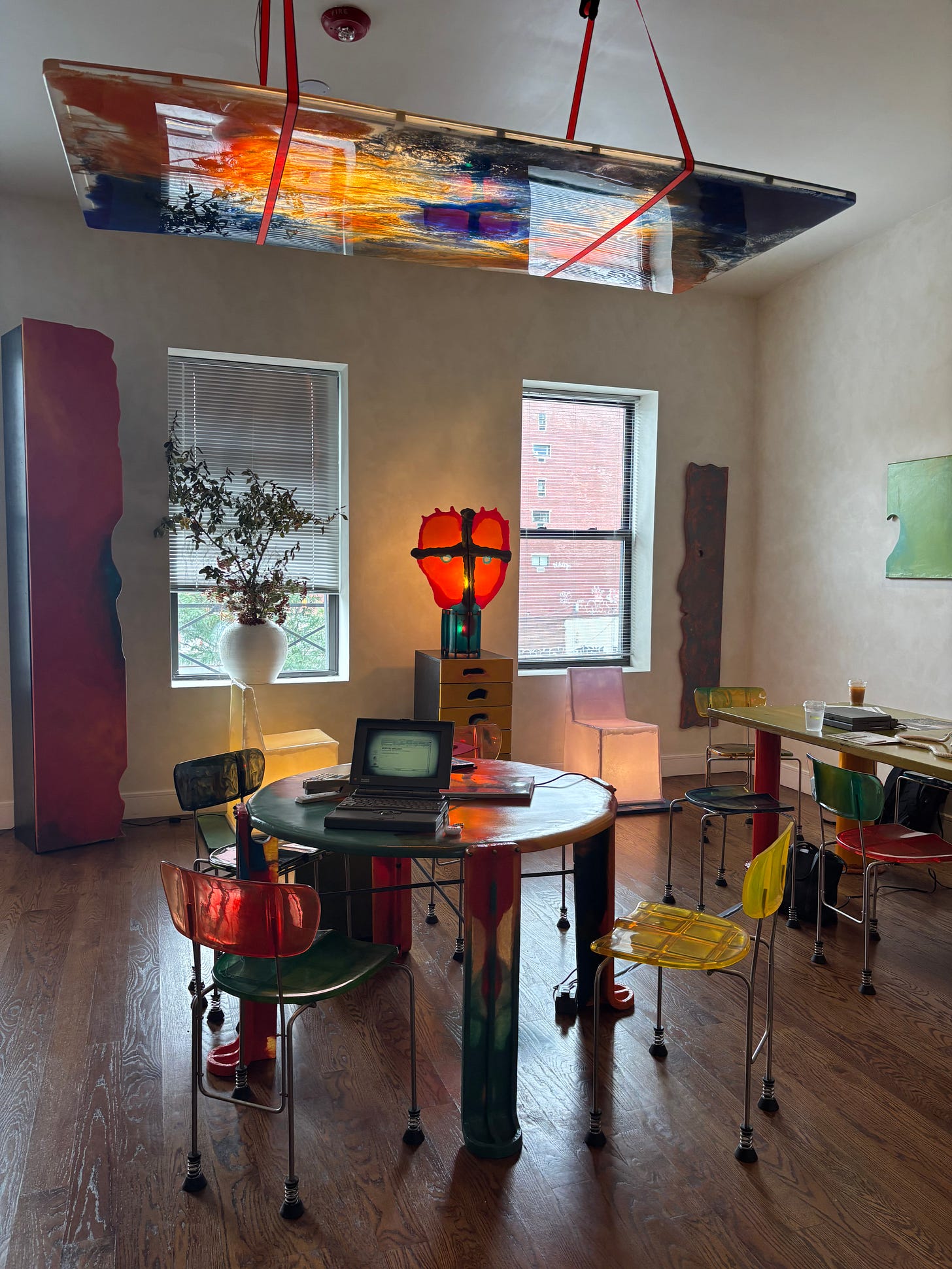
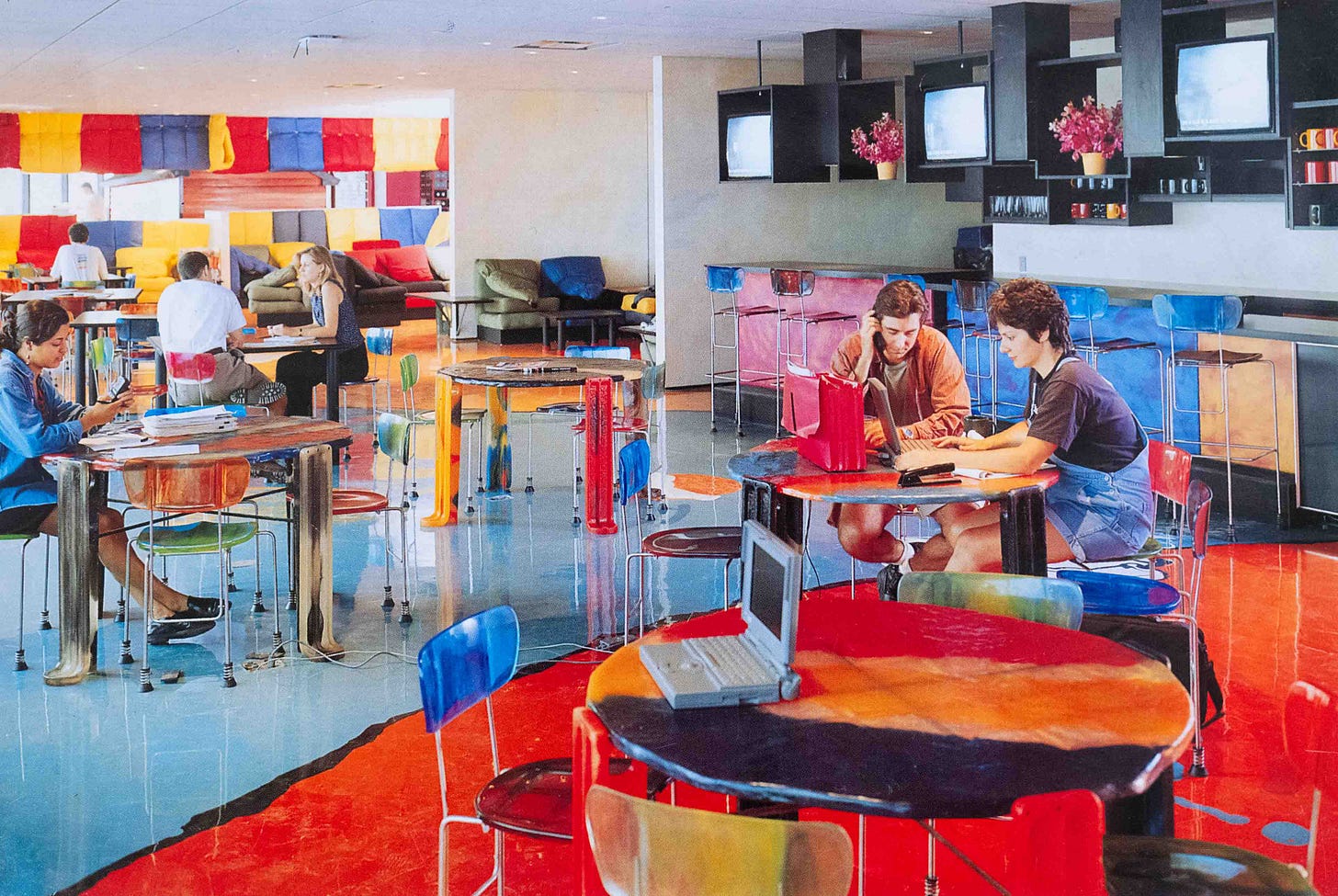
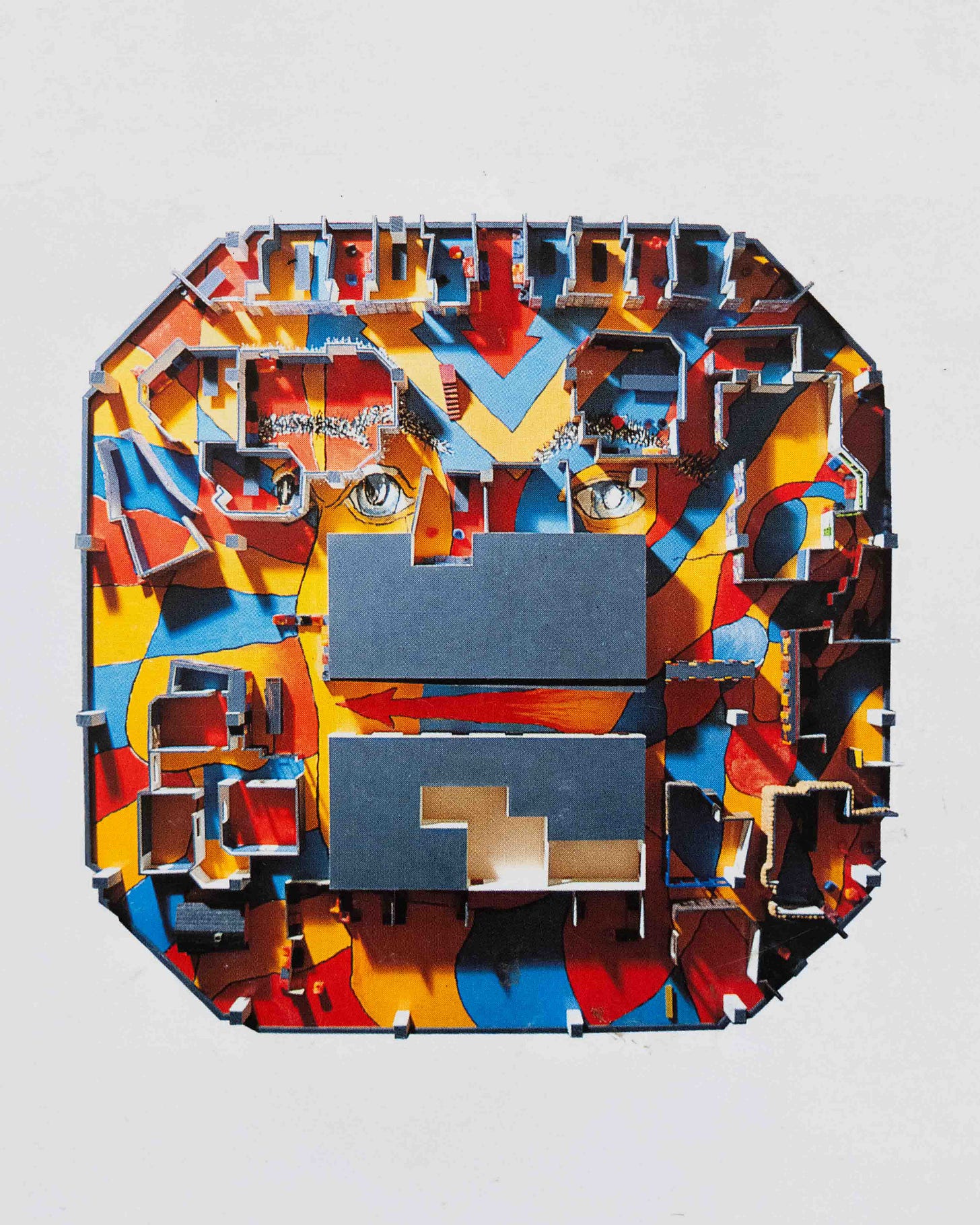

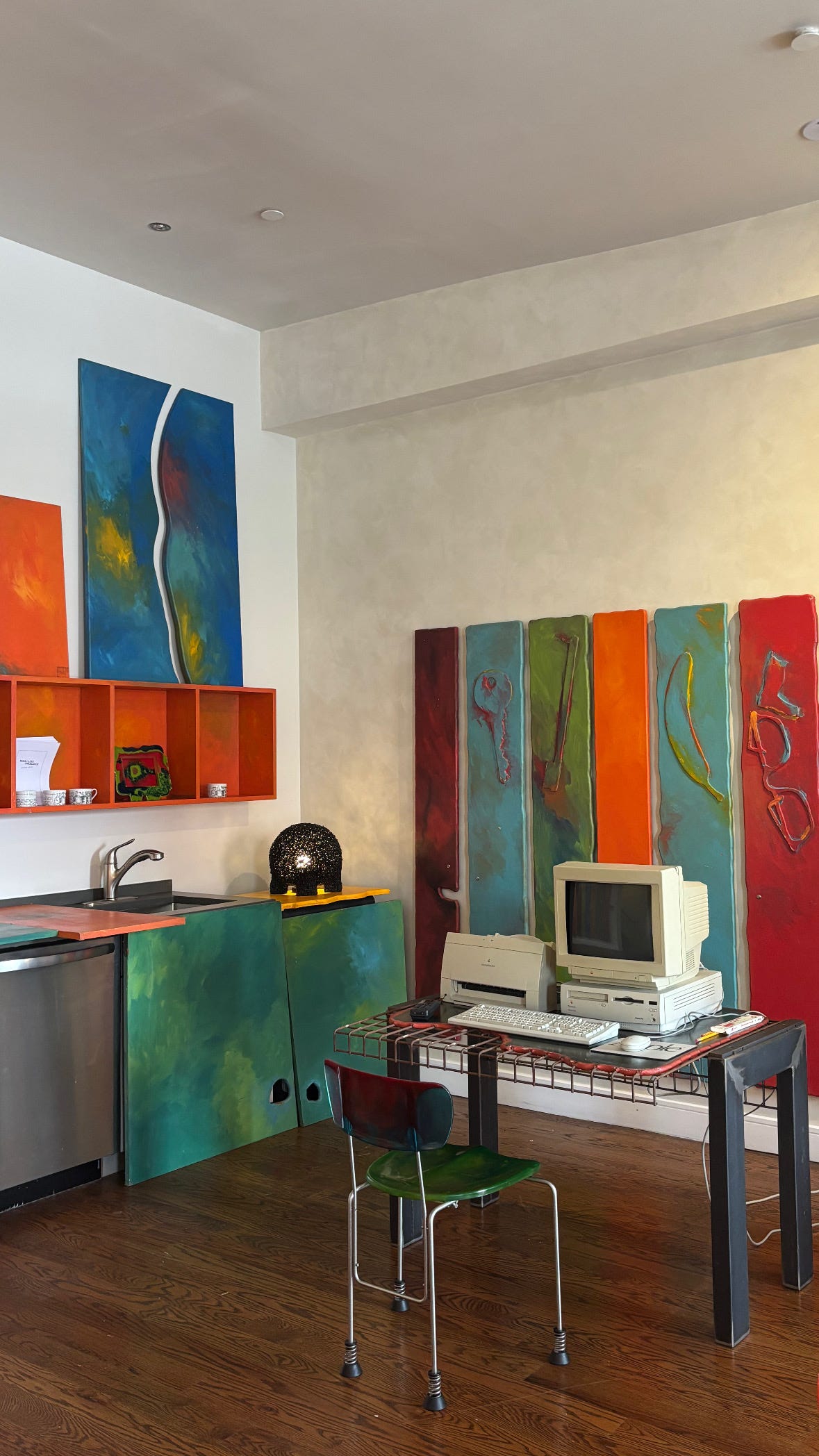
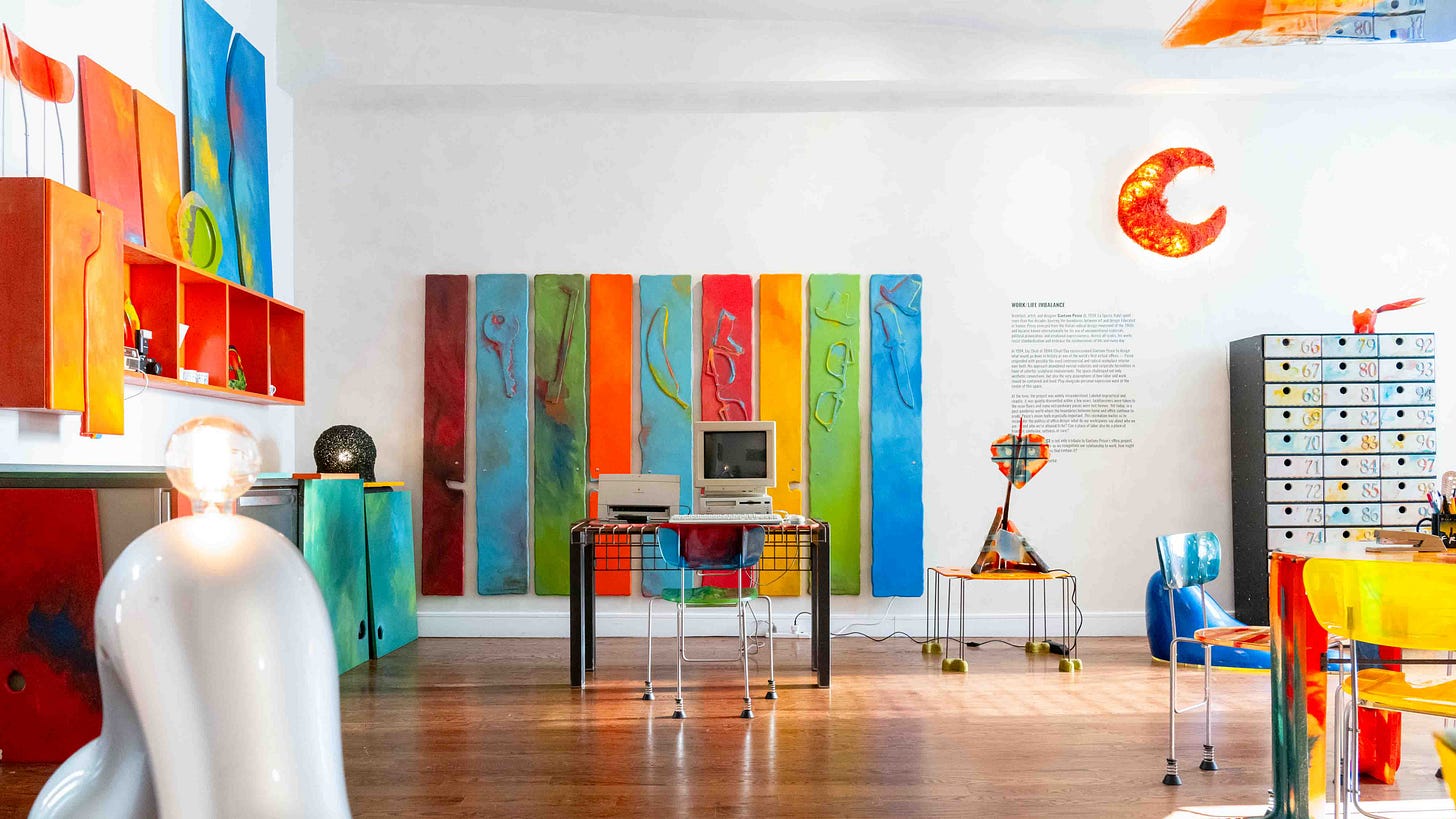
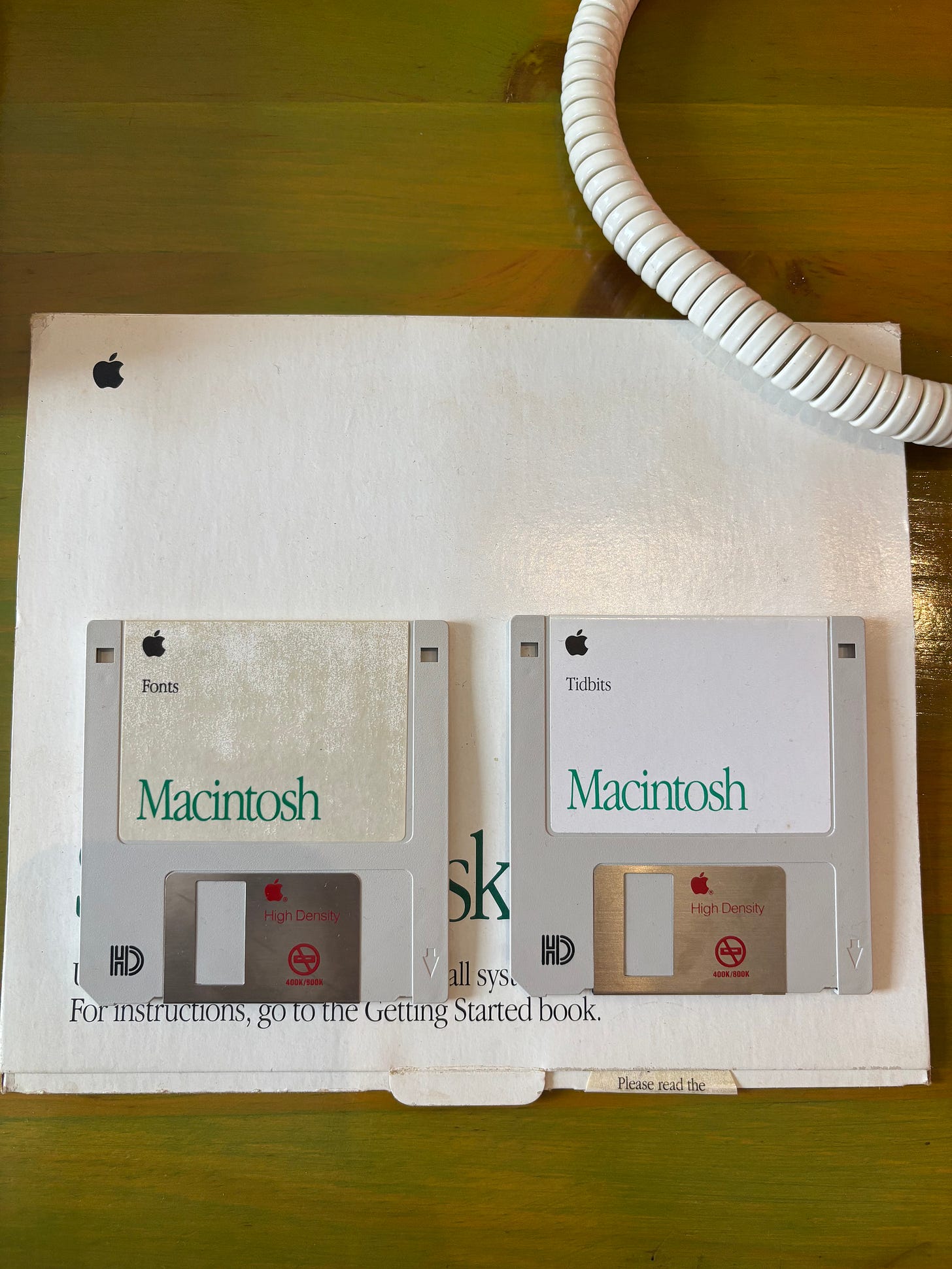
A dream office! The mail cabinet is so reminiscent of Jasper Johns’ work to me.